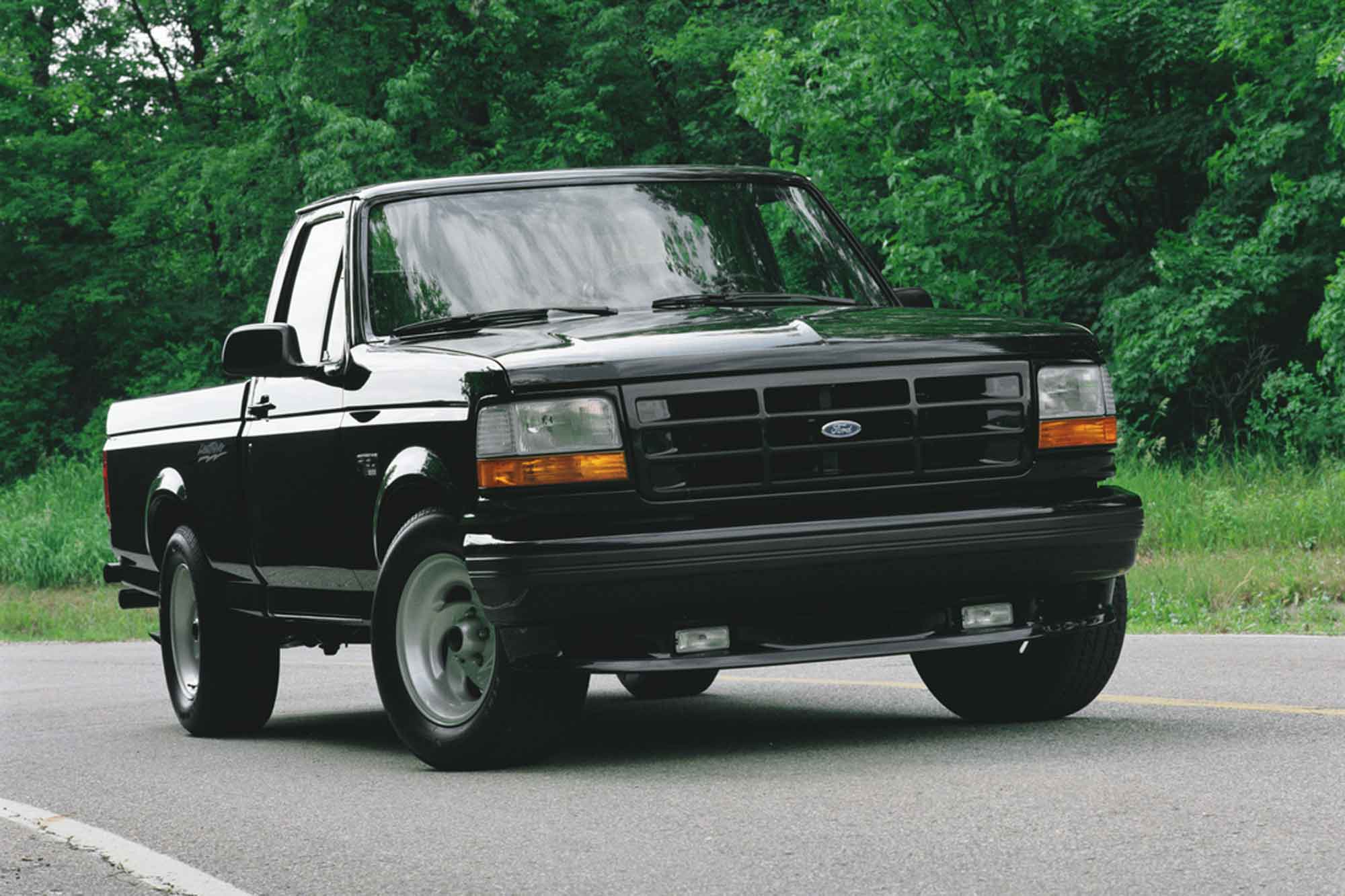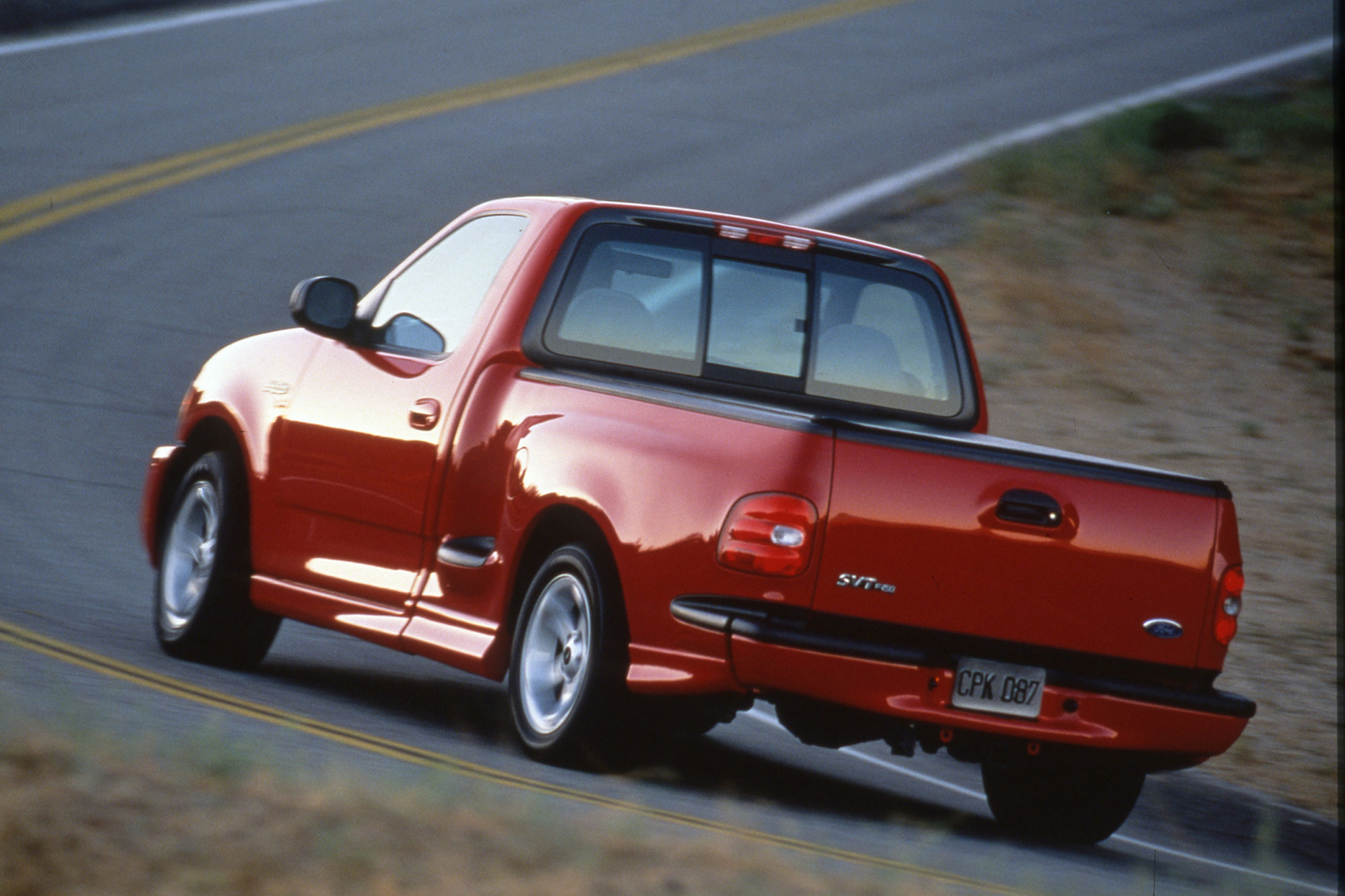Performance Pickup Trucks: Ford F-150 Lightning
Ford envisioned the original F-150 Lightning as a Mustang GT with a cargo box.
 Ford
Ford
The electric Ford F-150 Lightning pickup borrows its name from the high-performance truck launched for 1993, but the two pickups share little more than their name. While the modern-day Lightning's main selling point is technology, its predecessors offered enthusiasts V8 power and a street-focused suspension system.
 Ford
Ford
Engineers Designed the F-150 Lightning to Compete
Ford developed its first entry into the super-truck segment to compete against the Silverado 454 SS that competitor Chevrolet released for 1990, though the two pickups overlapped once during the 1993 model year. The company said its goal was to create a Mustang GT with a cargo bed. Starting with a rear-wheel-drive, single-cab F-150, engineers in Ford's Special Vehicle Team (SVT) fitted a 5.8-liter V8 making 240 horsepower and 340 pound-feet of torque. The only transmission offered was a four-speed automatic.
Putting a powerful engine in the lightest F-150 variant unlocked a zero-to-60-mph time of 7.2 seconds. SVT ensured that the Lightning handled better than a standard F-150 by lowering the suspension system and installing 1-inch anti-roll bars. Model-specific styling cues such as a front air dam with fog lights, a body-colored grille, and 17-inch wheels set the Lightning apart from the other models in the range.
 Ford
Ford
Modifications Re-Entered the F-150 Into the High-Performance Segment
Ford built 11,563 examples of the original F-150 Lightning between the 1993 and 1995 model years. While the model wasn't replaced, the nameplate made a comeback in 1999 with a 5.4-liter V8 supercharged to 360 horsepower and 440 lb-ft of torque.
The second-generation Lightning received the same basic modifications as its predecessor. SVT engineers lowered the suspension and designers gave the truck a muscular appearance characterized by a body kit and several body-colored trim pieces.
The V8's output increased to 380 horsepower and 450 lb-ft of torque for 2001, and production of the second-generation F-150 Lightning ended in 2004 after Ford built 28,124 units. Although the original, off-road-oriented F-150 Raptor that launched for 2010 brought Ford back into the high-performance truck segment, the Lightning nameplate remained dormant until the electric F-150 made its debut for the 2022 model year.
 Ford
Ford
Value of the Earlier F-150 Lightning
Both versions of the V8-powered F-150 Lightning were built in limited numbers to compete in a niche of the truck market that no longer exists, so they're sought after and increasing in value. Hagerty valued a 1993 example in good condition at more than $24,000 in January 2023, a 80.7% increase compared with January 2022, and it pegged the value of a 1999 example in the same condition at $31,000 — 44.2% more than in January 2022.
Relatively well-preserved trucks often are valued higher. Vehicle-auction website BringATrailer.com sold a 1995 example for $32,018 in November 2022 and a 6,000-mile truck for $65,000 the previous month.
There Is a Modern Equivalent to the F-150 Lightning in the XL
The original F-150 Lightning and the electric vehicle are positioned on opposite ends of the truck spectrum, and Ford no longer offers a street-focused performance truck. The closest configuration available is an entry-level XL model powered by the optional 5.0-liter V8 rated at 400 horsepower.
It comes standard with rear-wheel drive and a 10-speed automatic transmission, and the available 17-inch silver steel wheels bring a sporty touch to the design. This Lightning-like F-150 costs around $39,000.
All vehicle pricing includes MSRP plus destination charges (set at the time of publication), and will be rounded to the nearest thousand.
Written by humans.
Edited by humans.
Related articles
View more related articles
